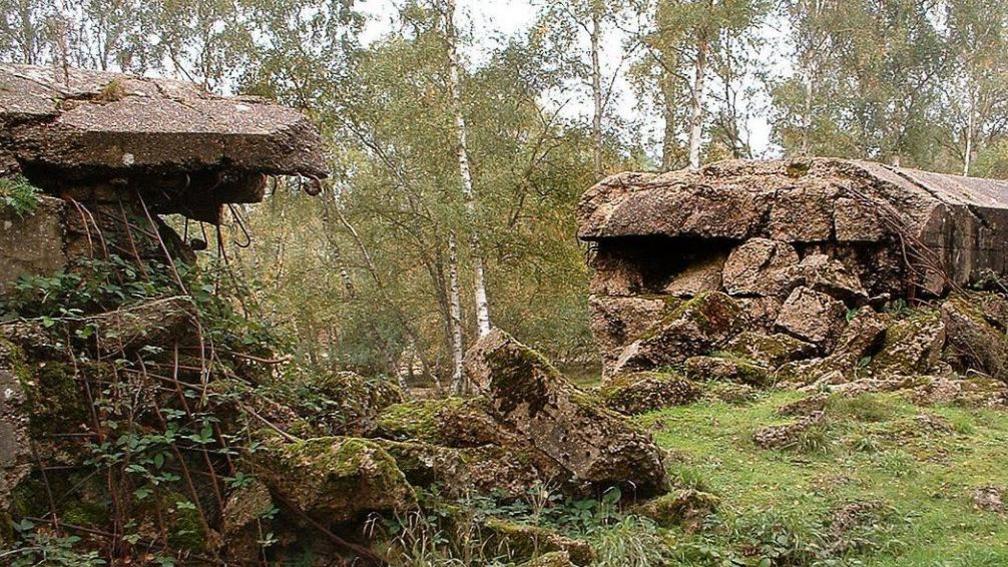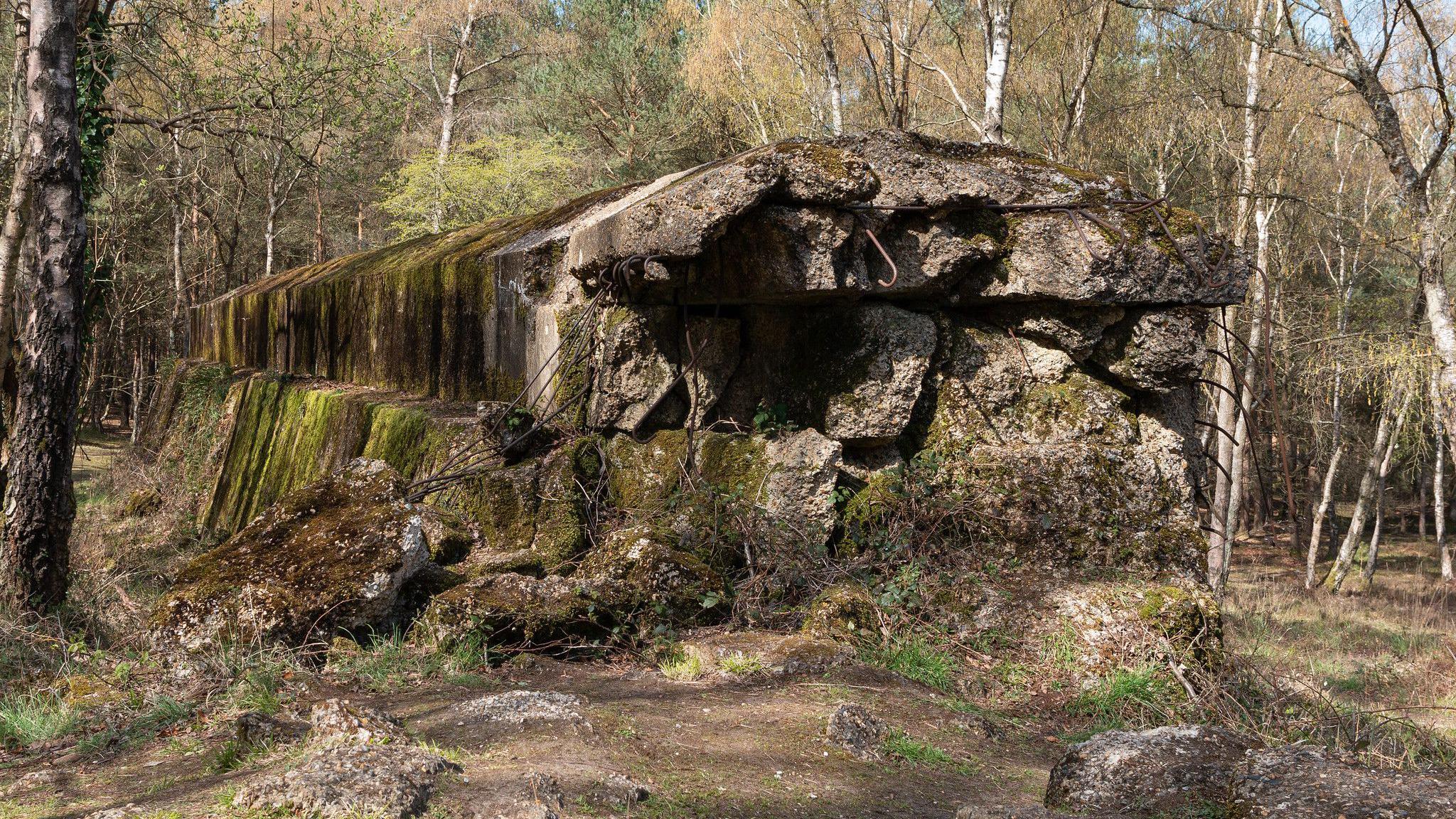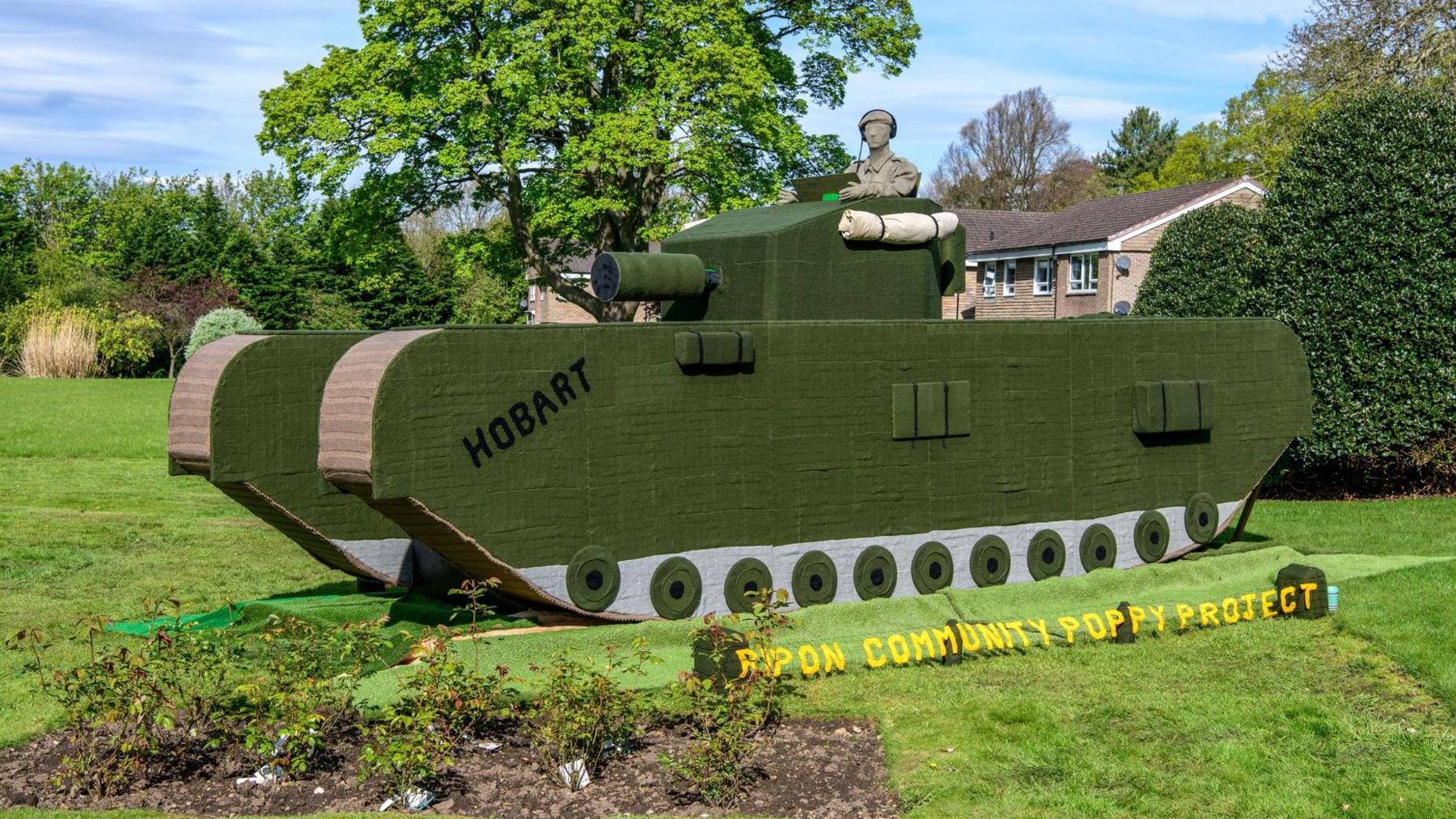How a wall in Surrey helped the Allies on D-Day

A replica of Hitler's Atlantic Wall was built in woodland on Hankley Common
- Published
Just a short drive from the Surrey town of Farnham lies the Hankley Common woodland, which hides a fascinating piece of World War Two history.
Dozens stroll past the huge wall that runs through the wood each day, but few will know of the key role it played in the D-Day landings.
By the end of 1942, German-occupied Europe stretched from the Atlantic coast of France in the west to the Russian Ural Mountains in the east.
But Hitler felt the coastline to the west was vulnerable to invasion, so ordered forts be built on 2,000 miles (3,218km) of shoreline along France, Belgium, the Netherlands, Denmark and the northern tip of Norway.
The defence system would inevitably fail, thanks in part to the tests carried out hundreds of miles away in Surrey in 1943.

Much of the wall in Surrey was destroyed during armoured vehicle testing
Royal Canadian Engineers based in the area built a replica section of wall in the woodland using plans smuggled from France, which showed how the real wall was built.
The Army then began blowing the wall to pieces using two new armoured test vehicles.
One of the vehicles was the AVRE mortar-firing tank, which was then used to break through the real Atlantic Wall during the D-Day landings.
"It was about creating new armoured vehicles, vehicles that would be able to breach this wall," said military historian Paul McCue.
"The people who built this went ashore during the invasion of France and many lost their lives.
"There's a plaque on it but it's quite a modest one and it's tucked away, so people will walk past it and not see it."
Today, it is clear to see the chasms that were blown out of the wall during tests, with metal rods still poking from moss-covered rubble.
Secret Surrey
Explore more fascinating stories from Surrey
Listen and subscribe for the latest episode of Secret Surrey
Follow BBC Surrey on Facebook, external or X, external. Send your story ideas to southeasttoday@bbc.co.uk, external or WhatsApp us on 08081 002250.
The eerie wall in the woods
Related topics
- Published3 June 2024

- Published28 September 2024
